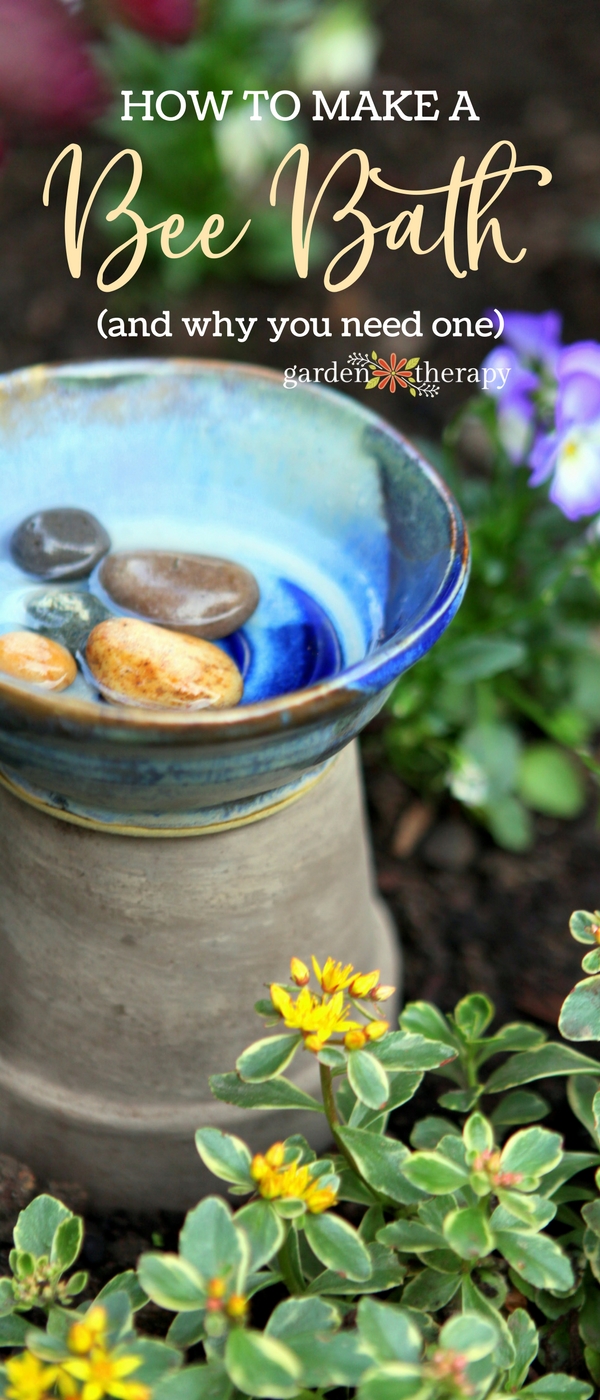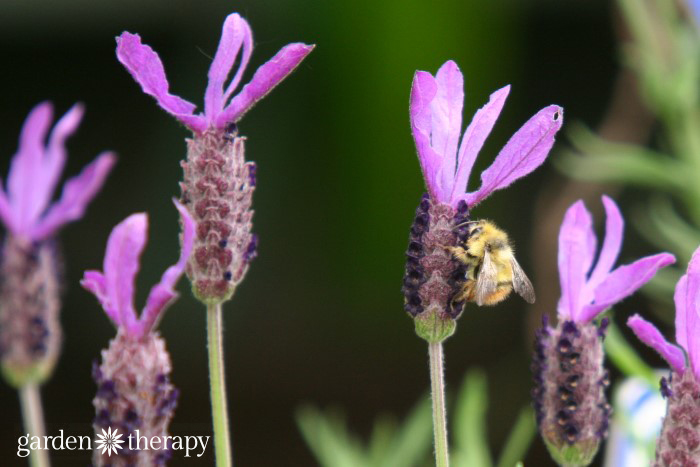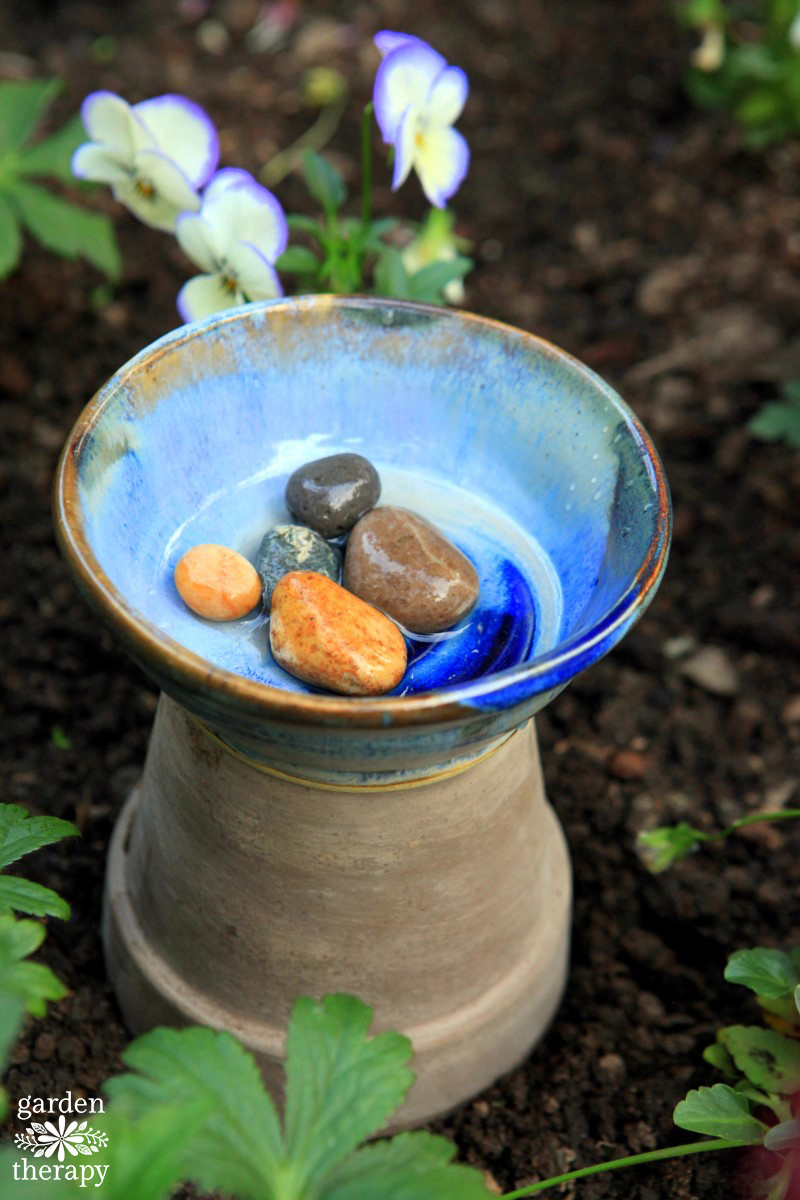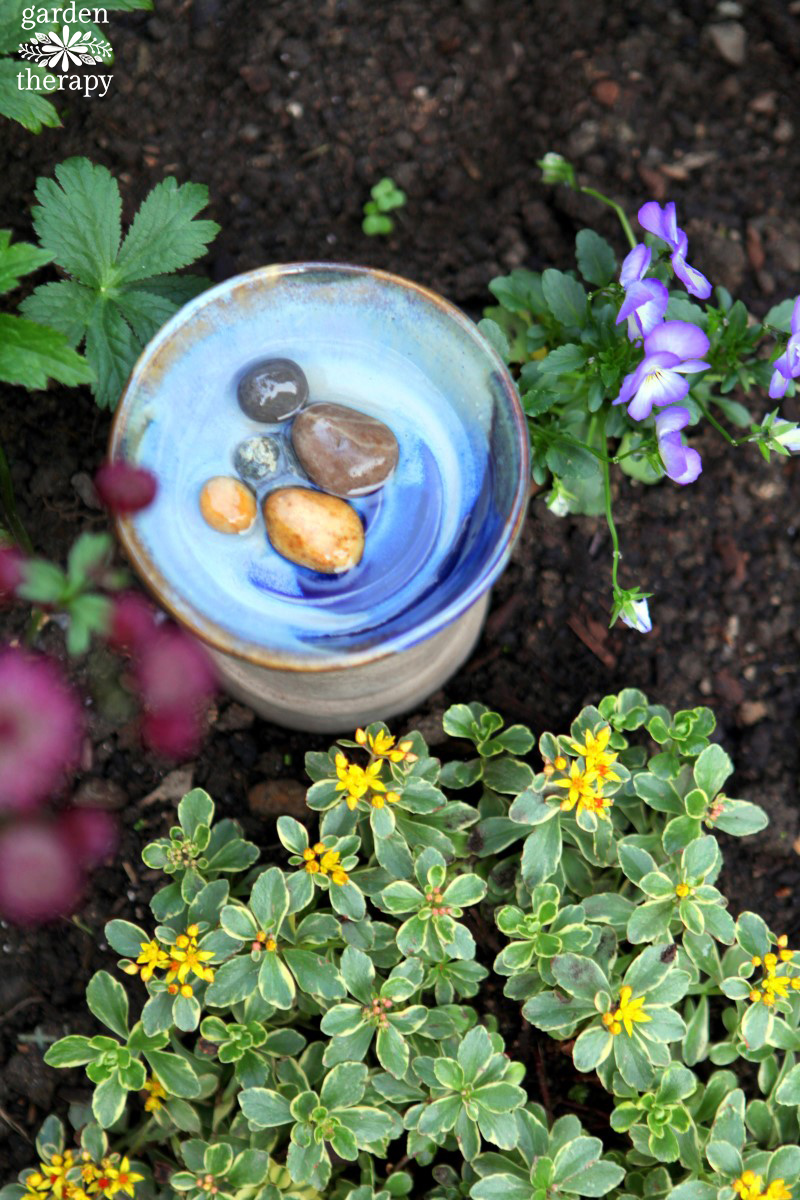Creating a bee-friendly garden means more than just planting flowers. You certainly want to attract them with gorgeous blooms, but while they are in your garden you will want to give them a place to collect water: a pond, fountain, or a bee bath. A bee bath is a simple bee water feeder that is easy to make and care for in your home garden, and it’s a nice touch to set out for your pollinating guests. After all, without those busy workers in the garden, you wouldn’t have as many beautiful blooms or fresh vegetables and fruit to harvest.
Attracting bees to the garden is an important way to keep your garden healthy and productive. You don’t need to have a mason bee house for native bees, or keep honeybees in boxes to invite these fuzzy, striped insects into your yard. Planting bee-friendly plants and creating an attractive habitat for them should be enough to welcome them into your yard.
Why Do Bees Need Water?
Beekeepers know the importance of having water available for bees. They collect water for a variety of reasons:
- to dilute honey – bees use water to manage the consistency of honey and thin out honey that has crystallized,
- to help with digestion – just like us, bees need water to aid in their digestion,
- to keep the hive cool – these smart little creatures will add water to the hive and fan it with their wings, air-conditioning the space by cooling it down,
- and to feed the babies – the nurse bees that feed the larvae need plenty of water to create the right baby food (royal jelly).
 In the home garden, a shallow dish or bowl with some rocks in it that sits above clean water is just enough to give bees a drink. The idea is to create a source of fresh water that has places for the bees to perch as they drink and collect water.
In the home garden, a shallow dish or bowl with some rocks in it that sits above clean water is just enough to give bees a drink. The idea is to create a source of fresh water that has places for the bees to perch as they drink and collect water.
Materials
- Shallow dish
- Plant pot
- River stones
- Fresh water

Make it!
Choose a spot in the garden where it is protected and shady. Set a plant pot upside down to use as a base. Set a shallow dish on top of the pot. Choose a dish that is water safe like glass or ceramic, as plastics and metals may leach into the water. Add a few river stones into the dish. Add just enough water that the tops of the stones are not submerged. Change water daily and clean the bee bath weekly.
Here are some more articles you might like:
- Attracting Beneficial Insects
- The Beneficial Insect Super 7: Important Natural Enemies on Patrol in Your Garden




I have 3 bird baths in my yard, 4 hummingbird feeders, & 1 large bird feeder. To try and keep the birds, bees, & dragonflies, extremely hydrated, I put fresh water twice a day. I also am trying to encourage the bees to stay out of our pool. We live in Arizona so every creature I’ve mentioned hovers over me as I clean and put fresh water. I sometimes have 20 bees ???? flying around me while I put fresh cold water in the baths. My kids think I’m crazy (that’s debatable) & I’ve yet to be stung. I’ll keep supplying water for as long as they desire it.
haha! if you are crazy, you are crazy like me. Birds and bees, etc are the BEST garden friends :) You take care of the well.
Hi Heather that is very interesting how the bees etc know you are the source of their fresh water. You go girl.
Leach rather than leech (a creature I can’t bear in the garden which I’m sure is horrible of me!)
Does the bee waterer attract wasps?
Water sources in the garden don’t discriminate, and all thirsty critters may stop by for a sip. That being said, it will not attract new wasps to your garden that weren’t already there. Even if it did, though, the wasps are very beneficial insects to have in the garden. While I know they can be a nuisance, if you have space to allow all the wild creatures to visit you garden, it will help to keep the ecosystem in balance.
I’m Constantly life saving insects with a leaf from my bird bath. Their alive but left with soaked wings , super disheartening . I hope this will solve the (almost drowning) issue I have with these poor creature which I love .
I hope it does, as I love EVERY creature and am saddened by ANY life ending.
I’ve been told that bees actually prefer water with a light covering of algae over pure clean water. Not sure whether that is so they can discern the surface of the liquid so they don’t drown or the content. May have to carry out an experiment with adjacent bowls containing one of each.
I don’t have a shady spot in one of my gardens. What do I do?
Perhaps create shade under a tree or plant?